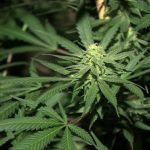Cannabis Extractions can be a Bumpy Ride
Extraction can be simply defined as the removal of soluble material from an insoluble residue, either liquid or solid, by treatment with a liquid solvent. The extraction process itself is well defined, documented and relatively straightforward. In fact, plant extraction has been around for centuries and methods have been developed to “remove” and separate certain key elements from the plant. However, with cannabis, this “simple” process can become quite complex indeed.
I like to use an analogy of a bicycle ride. As the crow flies, your bicycle journey from point A to point B may seem like a straight, unobstructed path from start to finish, passing by clearly defined check points along the way. The reality, however, is that once you embark upon your journey, you may find steep hills you hadn’t anticipated, come across a ravine you must circumnavigate, or get bogged down by an extreme turn in the weather. That’s how it is with extracting cannabis. It can be a very bumpy ride.
Sticking with the bicycle analogy, you can also choose which type of bicycle you need for your journey. Perhaps you have singular, clear cut goal and choose a sleek, lightweight road bike built for speed. Or, you may opt for flexibility and want to gear up for a more arduous journey and choose a mountain-style bicycle to be able to address any obstacle in your path.
That’s how it is with cannabis extraction as well. There are several types of extraction methods to choose from, with or without using solvents. Each method has advantages and disadvantages.
In solvent based extractions, the cannabis (trichome heads) dissolves in the liquid solvent which is separated from the plant material and evaporated, leaving a pure resin extract with as little residual solvent as possible. Ethanol is a well-documented alcohol-based extraction solvent. Butane and propane are also used as extraction solvents, each with pros and cons based on the component being extracted and the starting material.
There are also some very basic solvent-free extraction methods, sometimes referred to as mechanical extractions, including hash, dry sift, bubble hash and rosin. For example, kief can be separated from cannabis buds simply by grinding and sieving. With traditional hash, the goal is to separate the trichromes from the plant material by either taking frozen cannabis buds and breaking them into smaller and smaller parts over a screen or using ice water to separate the trichromes from the bud. After drying they can then be pressed in a hash block.
In my role as a cannabis processing consultant, I focus on using CO2 as the solvent in a supercritical fluid extraction process.





